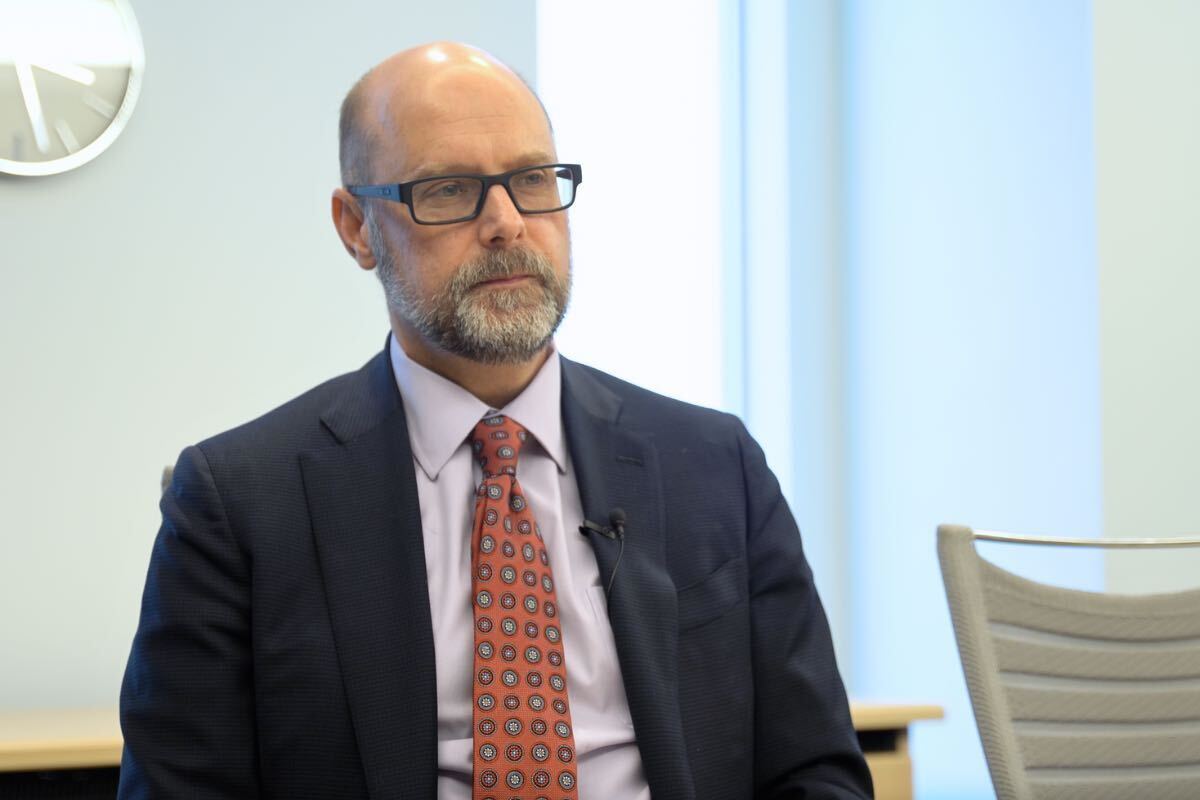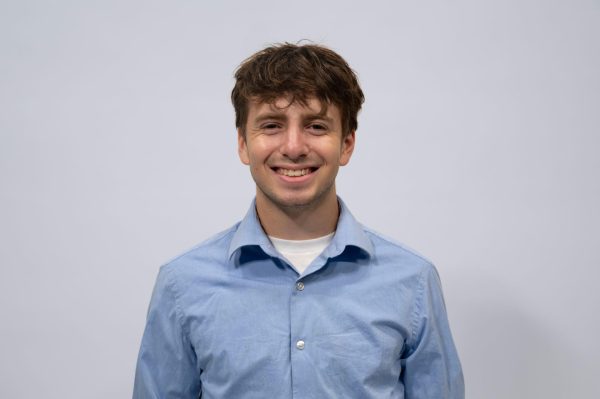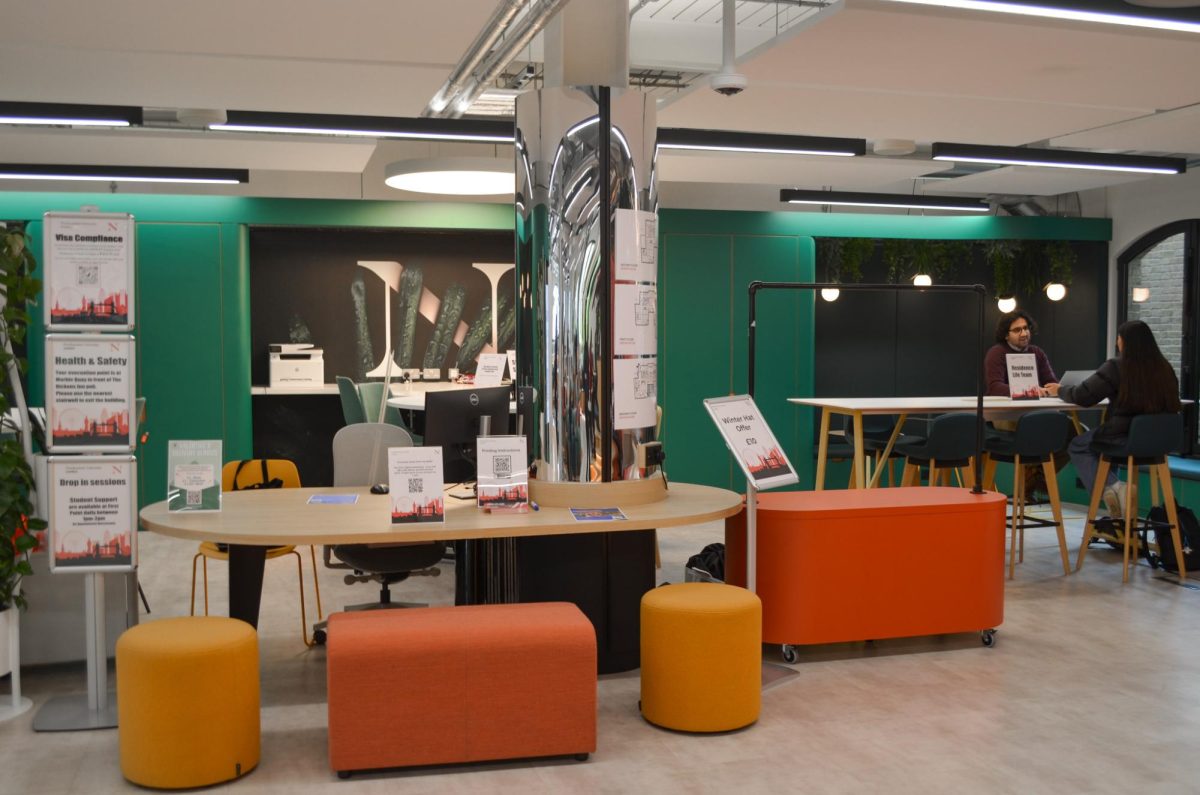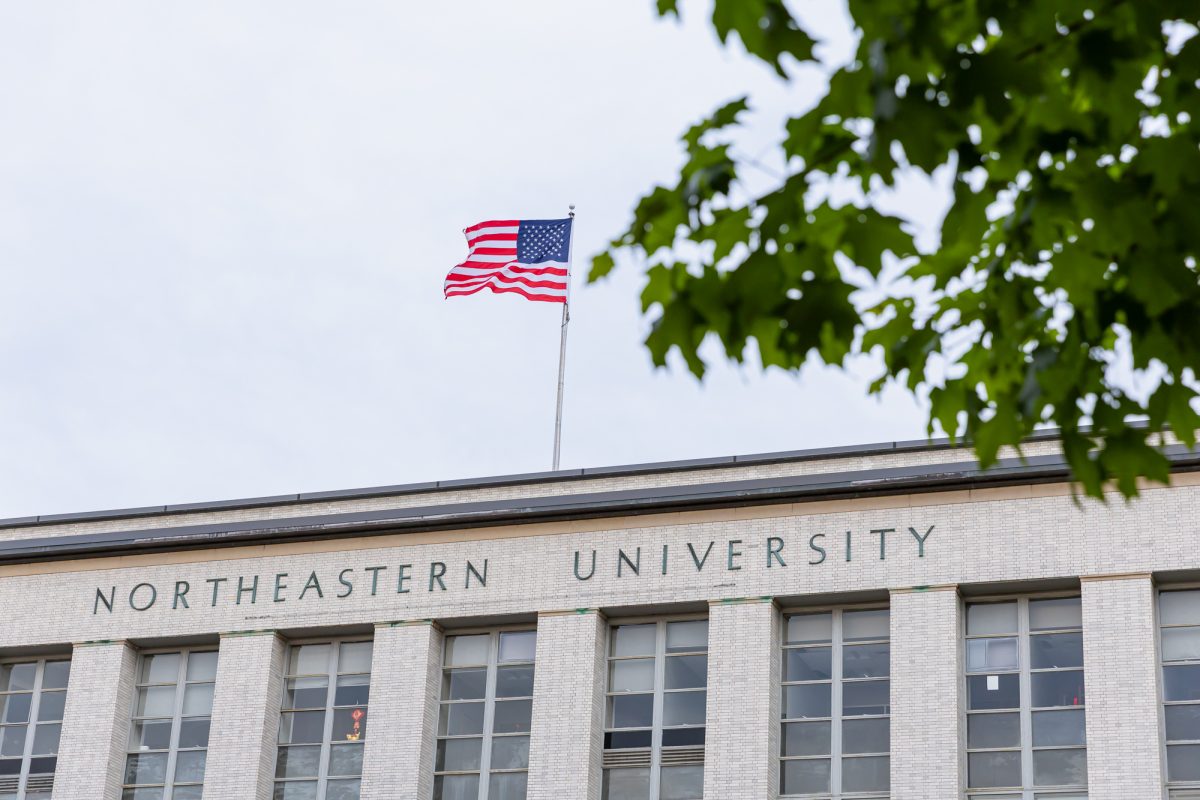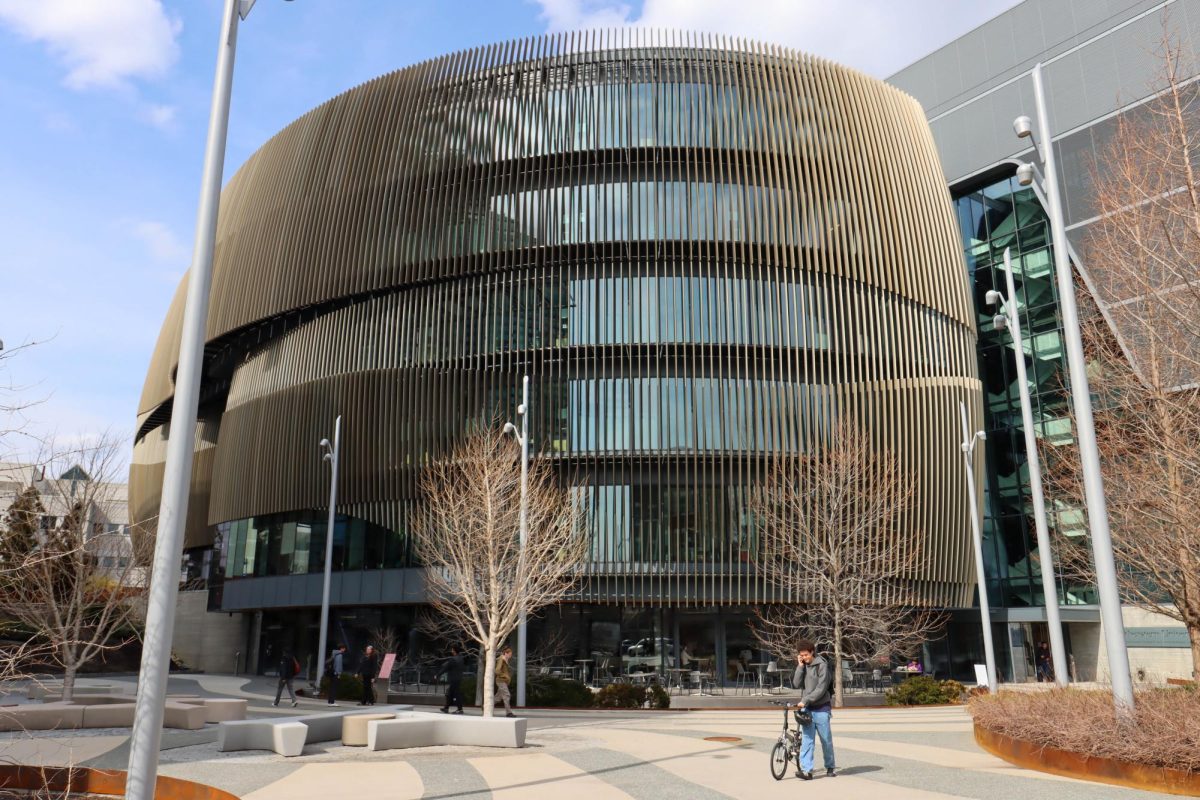Northeastern Chancellor and Senior Vice President for Learning Ken Henderson sat down with The News for an hour-long interview in an International Village conference room April 3 to discuss admissions, Northeastern’s global campus system and university diversity.
The Chancellor’s Office oversees a wide range of university priorities, including enrollment, student life, the university’s experiential learning programming, athletics and diversity, equity and inclusion initiatives.
Henderson discussed several major university-wide issues and topics, including a record-breaking number of Northeastern applicants this past year; overcrowding on campus; how Northeastern both maintains its own identity and the identity of satellite campuses in a global campus system; and the university’s commitment to diversity, equity and inclusion after the Supreme Court’s decision striking down affirmative action in college admissions.
This interview has been edited for length and clarity.
The Huntington News: Northeastern received over 98,000 applicants this year. While the university hasn’t published its acceptance rate yet, many students have asked The News, what does that rate actually represent?
Henderson: The 98,000 number is an amazing number. It does show that the university is extraordinarily attractive to a broad swath of students, both nationally within the U.S., but increasingly internationally as well. The acceptance rate really reflects that great desire for the population to want to have a Northeastern experience.
But it’s not really about the acceptance rate. It’s about ensuring that we choose the right student who is going to make the most of the opportunities that Northeastern offers. We have multiple entryways into the university, which goes into: What’s the right way for you to enter and have your first experience at Northeastern? It could be that you come to Boston in the fall. It could be that you enroll in Oakland. It could be that you’re in London.
We provide a lot of different experiences of different routes into the university, depending on what’s the right fit for that student. Our job in admissions is ensuring that it’s the right student who’s going to make the most of Northeastern that comes here.
HN: Last year, a bit over 5% of applicants were admitted. What does that number actually show?
Henderson: All universities report centrally to the government on fall entry. So that’s the fall entry number — it’s students who come to Boston who are reflected in that specific number.
HN: So for students who are studying for four years in Oakland, for example, they are not counted in that acceptance rate number?
Henderson: There’s different numbers for different programs. For the Boston number you just mentioned, that’s only for students who are coming to Boston.
HN: There’s a lot of students on this campus. You see that in the libraries. You see that in the dining halls. This can likely be somewhat attributed to the class of 2025’s enrollment, which some officials have called a “bulge year.” But do you think this is an ongoing issue?
Henderson: We look at capacity and infrastructure very closely. We’ve increased a lot of capacity and reallocated how we actually run the university in terms of infrastructure in order to ensure that we’re meeting the needs of students. So, for example, the renovation of Snell Library, which is a pain point right now because we’re still renovating two floors, will be open very shortly. But what we’ve been able to do in that space, for example, is take from maybe 50% of the floor plan that was used for books down to 5%. So that is now going to be an amazing asset for student study space, collaboration space, maker space, research for students.
We’ve also added significant housing in order to ensure that we are providing the appropriate accommodation for students. So just beside the Prudential Center, we’ve got 60 Belvidere St., which has come online just recently. That’s added around another 600-or-so beds to our capacity.
The demand is great to come to Northeastern, and we certainly want to meet that demand, but only at the point that we can deliver the highest possible quality overall student experience. So that’s the balance we’re trying to make.
HN: We’ve also seen the large student population impact students’ ability to access various campus resources outside of just physical space. Students have reported ongoing shortcomings with both University Health and Counseling Services and the Disability Resource Center. What is being done to alleviate some of that pressure?
Henderson: That’s something that we’re very sensitive about. The expectations and needs of the student population continue to evolve and change.
I think COVID has changed the dynamic quite a bit, and our awareness of the needs of students, and students advocating for themselves, which we very much encourage, for their own resources: things like disability resources, mental health support and medical support through UHCS.
So this is something that we absolutely are very aware of. That is an area that sits underneath the chancellor’s office, under Madeleine Estabrook, our senior vice chancellor for student life. And we’re constantly looking at calibrating the right level of staffing support versus the actual student need depending upon the peaks and troughs of the needs of students as they come in.
You can imagine that we are a very cyclical organization about what students need at what times of year and when stress, anxiety or things like disability resources come about. We’re trying to make sure that we have mechanisms in place to even that out. I’ll give one example I think has worked very well for us.
Just before COVID hit in 2020, about six months before, we engaged in telehealth mental health support, which is Find@Northeastern. That’s turned out to be a great resource for us because it’s 24/7 and geography-independent. Students have a wide variety of counselors they can work with that fit their particular needs and desires. And it’s something that’s really alleviated the need to have staff at the level you would have to staff with only in one site in Boston. So it’s trying to find innovations like that, that are able to adapt to the environment, be flexible and nimble, that can actually help students where they are when they need that help.
HN: If students, no matter where they are, think that there are certain aspects or issues to be improved, what’s the best way for them to communicate that to the university?
Henderson: I’m a big believer in the Student Government Association. I do think that a strong student government is a really important component for providing channels of communication for student concerns or opportunities for the institution. We have a mechanism for how the student government, both undergraduate and graduate, annually works with the administration on a set of issues. And then we report back on those during the academic year to make sure that we’re making progress.
It could also depend on the nature of the issue. If it’s something to do with your major or the classes that you’re taking, it’s probably looking at your academic adviser or your co-op adviser if it’s something in that space.
HN: Shifting topics a little bit, I want to talk about global campuses. With so many campuses, obviously there’s a desire to have different opportunities for students to experience all these different places.
But I’m guessing there’s also a desire to have one, sole Northeastern identity across those campuses. When you’re looking at Northeastern’s 13 campuses, are they always prone to some level of fractionalization and compartmentalization, or is there a goal, at all of these campuses, to have one Northeastern identity?
Henderson: There is one Northeastern. So what we expect, and what we are building through the global university system is a uniform set of experiences — so standards and expectations. However, that doesn’t mean that your experience in London is the same as your experience in Seattle, which is the same as in Oakland. It’s absolutely that your experience should be guided by the location you’re in. That’s experiential learning; it’s learning in an authentic setting.
What we want to do is ensure that the level of care — the standards that are within, for example, student life, clubs, organizations, healthcare — is at a standard that is appropriate for that environment. So, for example, in London, the healthcare system is very different. The expectations on student health and how student health works is very different in a U.K. setting.
But the expectation is that the essence of what Northeastern is, how we interact with students, the concierge-type approach that we have, experiential as a key element — that doesn’t matter where you go, what program you’re on — that is a constant. There are elements like that that will be unchanged, but the context of them, the flavor of them, the nature of that experience is going to be deliberately different. And that’s the important thing. It’s not randomly different, it is what makes the best sense for the student experience in that location, but is still fundamentally Northeastern.
I’ll take a simple example: When you travel around the campuses and you walk into the spaces, and it feels like Northeastern — the colors, the nature of the architecture and design looks like Northeastern, but they’re all slightly different from one another. They’re all based upon the local geography. They’ve all got their own narrative, so they’ve all got that flavor signature of being in that geography. But they’re connected together that they are one Northeastern.
HN: We’ve heard from students at forums and in opinion pieces for The News that while it does feel like Northeastern, there are some gaps when students return to Boston from a global campus. For example, if I’m studying in London and I come back to Boston, I might not feel fully integrated. We’ve also heard from professors at these other campuses that they don’t feel necessarily entirely connected to the Boston campus as well. Are there ongoing efforts to alleviate some of that?
Henderson: That’s ongoing, never-ending work. We’re a big, complicated, international organization. We’ve got different local cultures in these different locations, which is absolutely natural. So we’ve got a lot of programming that we are continually working on and looking for feedback on how to improve, both on the faculty and staff side of things, but more and more the student side of things.
I’ll give an example: A couple of years ago, we made a switch so that all the staff in the N.U.in sites actually all report up through Student Life. So they all come up through one organization. All the training is done through Student Life. All the conduct, everything is the same. A few years ago, we actually had a separate organization that ran in N.U.in, but we wanted the feel of the program, the type of service that you would get, to be continuous so that when you move from one location to the other, it’s more seamless.
It’s absolutely something that we’re very focused on. I’ll just give one more example: On the faculty side of things, we were really delighted this year, after the merger with Mills College in Oakland, for two of those faculty to serve on faculty senate, so that’s faculty governance. And both of those individuals work in the executive group called the Senate Agenda Committee. So that’s the type of thing that we’re trying to encourage about participation — committees, groups, organizations that are not just transferring physical location, but can actually work together on group work, such as faculty senate.
HN: On the flip side of that, when you’re going into these other campuses, how does the university go about maintaining the identities of these specific places?
One example that we’ve reported is at the beginning of the spring 2022 semester, prior to students receiving degree audits, Mills College held a town hall where students were told that all programs at Mills that were not already part of Northeastern would be cut. How do you go about maintaining those identities when also trying to create a culture of one Northeastern?
Henderson: The key element here is: What is it about that location, faculty and their expertise, which is unique and different? So certainly Mills has a legacy — the way we’re doing it in Oakland is with the Mills Institute. The Mills Institute is an organization led by Christie Chung, who is also a faculty member at Mills College at Northeastern. And that’s the organization that’s leading the legacy, keeping the legacy of women’s leadership and moving forward in terms of programming, research and our reach into the community. And that was part of ensuring that that was something that was going to be maintained as we move forward with the merger.
HN: But when programs are cut, right — historically, Mills was a college for women, specifically women of color, and for non-binary folks as well — how do you maintain the institution’s identity, although there is the Mills Institute, when these programs are being removed?
Henderson: Technically what happened here is that Mills College closed. So they announced before then, before Northeastern interacted with them that they were formally closing. As a function of them closing, they are no longer allowed to gather degrees. It’s nothing to do with Northeastern. That ability to actually give out Mills degrees ceases as soon they are going to close. The students then transferred into Northeastern, whether or not there are Mills programs. So after the merger closed, there wasn’t a continuing program in certain areas. The students had to transfer into other areas. And that would have happened if Northeastern came forward or not, that the students would have transferred into other programs, other colleges of universities. It’s not really something that we can control as in that case, it’s really just how the regulations and accreditation works.
HN: Moving to a different topic, something that higher education institutions have grappled with throughout the past year is the ending of affirmative action. What is the university doing right now to tangibly ensure a diverse student population?
Henderson: One of the areas that reports up to me is enrollment management, and that includes undergraduate admissions. We saw this coming for several years, so we had been planning for the [Supreme Court] decision for a long time at this point.
Practically, what we are doing is we have ramped up the work that we’re doing with organizations that are historically minority-serving or underrepresented groups to ensure that we’ve got pipelines, connections, contacts into areas that historically maybe we have not had.
Another thing that we’re doing very aggressively is looking into geographies that perhaps we’ve not spent as much time and energy in. And now we’re ensuring that we’re putting focus where we believe we can attract the top, diverse talent that we possibly can. Of course it’s illegal to use race directly in admissions — so we’re absolutely complying with the law.
We’re trying to make sure, which is really critical, that we’re taking a very holistic view. We’ve completely revised how we actually look at students and who is qualified and who’s going to make the most of their Northeastern experience.
HN: A method that we’ve seen other colleges use is the supplemental essay, a way for students to talk about their backgrounds, their race, their identity. Does Northeastern have any plans to implement something like that?
Henderson: We have an optional essay, so students can absolutely do that and we read those essays if they’re submitted. We are unlikely to put that in as a requirement because the Northeastern philosophy is about flexibility. If you choose to do something, great. If you choose not to do it, that’s fine. It’s the same as being test optional for SATs and ACTs.
So the philosophy here is yes, you absolutely can do it. You can use those essays — it’s another tool that they can use. Absolutely. We’ll keep it optional.
HN: In 2020, President Aoun in his diversity, equity and inclusion action plan charged you, and Provost Madigan, with increasing the diversity of the student body so that it was representative of the United States by 2025. We don’t know what the incoming class looks like, necessarily, but are we on track to achieving that goal? And if not, is it still a goal for the university?
Henderson: So diversity, equity and inclusion remains absolutely key to the university’s plans. Every five years or so we develop an academic plan. And if you look at the latest academic plan, diversity, equity, inclusion is infused throughout that whole plan. It’s not a pillar. It’s not a separate issue to be addressed. It’s infused through all that we do. So the commitment and diversity, equity inclusion is absolutely still in place.
HN: But on that “representative of the U.S. by 2025” goal, is that something that seems plausible at this point?
Henderson: I would say that we will need some cycles through an admissions process in order to tell how this court’s decision actually affects the outcome. Right now, we do not have any information. So it’s hard to actually respond to that question because we actually do not know the answer about how we are even doing right now. It’s too early to tell.
HN: We’ve seen Diversity, Equity and Inclusion offices, policies and administrators attacked and heavily criticized. Do you think those criticisms are fair?
Henderson: We’ve been very clear about the commitment to DEI at the institution. We listen to our faculty or staff about what their priorities are, what they believe that we should be doing in this space.
I’ll just give one example of the work that’s going on in this space. Just about a year ago, we implemented what we said was an action planning process. So this is within the faculty and staff side of the world, but also through student affairs. We had every organization in the university write a DEI action plan. And the idea here was that because DEI should be infused throughout everything that we do as an organization, it doesn’t make any sense to have a plan at the top, which is then pushed out and implemented. It has to come from the bottom up. It has to come from everybody’s responsibility in the university. We did that at the unit level across the university, I think it was 60 or more of these action plans, which we are now in the process of executing. So the commitment is absolutely there for DEI moving forward.



